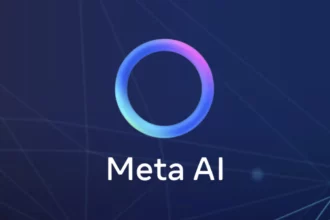Can artificial intelligence really read the messy scrawl of our handwritten notes? It sounds like something out of a science fiction novel, but the truth is that AI has transformed how we think about transcription. Just as the printing press revolutionized literature, modern tools like Transkribus are carving a path toward accuracy and efficiency in turning handwritten text into a sleek digital format. With cutting-edge optical character recognition capabilities, these technologies tackle even the most elaborate penmanship with impressive finesse. Get ready to dive into a world where human creativity meets machine intelligence, and the past’s written treasures can be unlocked with just a few clicks.
Table of Contents
ToggleCan AI transcribe handwritten documents?
Absolutely, AI has made remarkable strides in the transcription of handwritten documents. With the advent of sophisticated tools like Transkribus, the process of converting handwritten text into editable digital formats has become not only feasible but also efficient and highly accurate.
This technology employs advanced optical character recognition (OCR) algorithms that excel at interpreting a broad range of handwriting styles, ensuring that even the most intricate scripts can be transcribed correctly.
To give you a sense of how far we’ve come, consider this: years ago, digitizing handwritten notes was a painstaking task involving manual effort and was often filled with errors.
Today, thanks to AI, we can seamlessly upload images of handwritten texts—whether those are charming old letters or current meeting notes—and let the software do its magic.
The AI in Transkribus can recognize unique characteristics in handwriting and adapt to different styles over time through custom training models.
This means if you’re dealing with a large archive of vintage documents or personal notes that need careful transcription, you can rely on such tools to automate much of the heavy lifting. Imagine needing to extract names from extensive probate files or quickly searching for phrases buried in piles of paperwork—AI makes these tasks not just feasible but streamlined.
Once you’ve uploaded your documents, the AI kicks into gear to analyze and recognize the text.
You can review and amend any discrepancies in the transcription process, meaning that while AI does a great job, human oversight ensures accuracy and attention to detail.
In the end, you have not only a digitized version of your material but also the flexibility to export it as a PDF or DOC format for easy sharing. The future is bright for transcription technology powered by AI.
With tools like Instabase pushing the envelope further by attaining high accuracy rates in handwriting extraction, it’s clear that valuable information trapped in paper documents is finally being liberated into a new digital age where we can easily access and manipulate it.
So yes, AI can indeed transcribe handwritten documents effectively. The keys lie in leveraging powerful tools and understanding how they work so we can capture the beauty of our handwritten history while making it more accessible for future generations.
How does AI handwriting recognition work?
AI handwriting recognition operates by using advanced algorithms to interpret handwritten text through a multi-step process that transforms physical writing into digital output.
Initially, it captures digital images of handwritten documents, which can be achieved by scanning or photographing the pages. This is essential because high-quality images provide the AI with the best chance to recognize characters accurately.
Once the images are uploaded into the system, specialized models, often based on neural networks, analyze the handwriting. These models are trained using massive datasets containing various handwriting styles, accounting for the vast variability in individual writing.
The magic lies in the AI’s ability to identify patterns and translate them into machine-readable text.
For instance, if the system encounters a particularly curly “S” that doesn’t recognize it outright, it utilizes context and predictive algorithms from large language models (LLMs) to fill in gaps—much like how we might guess a friend’s next word in a conversation.
After this initial recognition phase, there’s usually a follow-up process where users can review and correct any errors or inaccuracies generated during digitization.
This feedback loop is crucial because it allows for continuous improvement in recognition accuracy; as users correct mistakes, the AI learns from these interactions, refining its algorithms and enhancing future performance.
From interpreting messy scrawls to recognizing diverse writing styles across different demographics, AI handwriting recognition is continuously evolving.
By leveraging machine learning techniques, including intelligent character recognition (ICR), this technology can dissect handwritten elements more closely resembling human reading capabilities.
In summary, while AI handwriting recognition tools have made remarkable strides in converting handwritten documents to digital formats efficiently, user involvement remains essential to achieve high precision and accuracy for each unique set of handwriting challenges they encounter.
What is Transkribus and how does it improve handwriting recognition?
Transkribus is a cutting-edge platform engineered to transform the way we interact with handwritten documents, making use of advanced artificial intelligence technology.
This innovative tool significantly streamlines the process of handling large collections of documents, whether for genealogical research, historical archives, or any data-heavy project.
What really distinguishes Transkribus is its ability to train bespoke AI models that can be fine-tuned to recognize and interpret various handwriting styles specific to your documents.
This heightened customization not only enhances transcription accuracy but also boosts efficiency as users navigate through potentially daunting volumes of handwritten content.
Imagine being able to seamlessly search for a name or keyword within a vast probate file! With Transkribus, what was once an arduous task becomes a matter of just a few clicks.
Moreover, the platform harnesses language models that significantly improve accuracy by predicting the most probable words and phrases—especially useful when faced with challenging handwriting or faded ink.
Additionally, Transkribus features Smart Search functionality, which smartly keeps multiple alternatives for each word contextually. This means that even if a word isn’t transcribed perfectly, you’ll still locate what you’re looking for—saving you time and frustration.
With so much detail packed into its services, Transkribus stands out as an invaluable resource for anyone dealing with handwritten texts—be it historians, researchers, or genealogy enthusiasts eager to uncover their family’s past.
Overall, by marrying sophisticated AI with user-friendly features, Transkribus turns the tedious chore of transcription into an enlightening experience that allows more attention to be paid to content rather than just deciphering it.
Can AI handle different handwriting styles?
Absolutely, AI excels at managing various handwriting styles. Tools like Transkribus are engineered with state-of-the-art algorithms that make it possible to handle a wide array of scripts and unique writing quirks. This adaptability is crucial, especially when dealing with historical documents or personal notes that feature different handwriting.
The magic occurs because the AI uses extensive training models fed with diverse handwriting samples.
This means the more styles it encounters, the more capable it becomes of interpreting them accurately.
Imagine uploading a beautifully penned letter from the 19th century alongside your modern handwritten notes; the system can analyze and transcribe both, ensuring accuracy across generations of writing styles.
Moreover, when users input documents with various handwriting characteristics, the AI employs smart algorithms to discern and adapt to those variances in real-time. This capability not only fosters precise transcription but also saves valuable time during the documentation process.
If you’re ever faced with deciphering intricate scripts or unusual writing styles, you can trust these advanced tools to alleviate much of that burden. In essence, AI’s ability to accommodate different handwriting styles is a game-changer in transforming once-daunting tasks into seamless operations.
Is it possible to automate the transcription of handwritten documents?
Is it possible to automate the transcription of handwritten documents? Absolutely! AI platforms like Transkribus have revolutionized the way we handle handwritten texts. These advanced systems not only transcribe text but also automate the entire workflow, transforming a once laborious process into a seamless experience.
Imagine this: you have a stack of aging letters or page after page of notes from a historical archive that you want to digitize.
With Transkribus, you can upload multiple documents in a single go and allow the AI to work its magic, processing and transcribing them rapidly yet accurately. It’s like having a smart assistant dedicated to minimizing your workload.
Once the AI completes the transcription, you can easily review and edit the output, ensuring that every character and word is captured correctly.
This streamlined management makes it substantially easier to handle extensive records, be it for genealogical research, academic projects, or personal archives.
By integrating user-friendly features with powerful AI capabilities, Transkribus not only saves time but also enhances the accuracy of your transcriptions while allowing you to focus on analyzing and deriving insights from your handwritten treasures rather than getting bogged down in tedious documentation tasks. The future of handling handwritten documents is bright—full of possibilities and significantly less hassle!
What advantages does AI transcription have over manual transcription?
AI transcription significantly speeds up the process of converting handwritten notes into digital texts. Unlike manual transcription, which can be labor-intensive and time-consuming, AI tools can quickly process large volumes of text. This technology also reduces human error, increases efficiency, and allows for searchable digital records, facilitating easier access to information.
How can I ensure the accuracy of AI transcriptions?
To enhance the accuracy of AI transcriptions, users can perform a couple of essential steps. First, make sure to provide high-quality images of the handwritten documents. Secondly, after the AI has processed the documents, review the transcribed text for any mistakes. Refining the text allows users to ensure its accuracy before saving or sharing the output.
Is ChatGPT capable of deciphering handwriting?
Yes, ChatGPT is also capable of reading and interpreting handwritten text. By employing optical character recognition (OCR) in its capabilities, it can effectively convert handwritten forms—even those with less legible writing—into digital data by defining a clear schema of the desired output.




